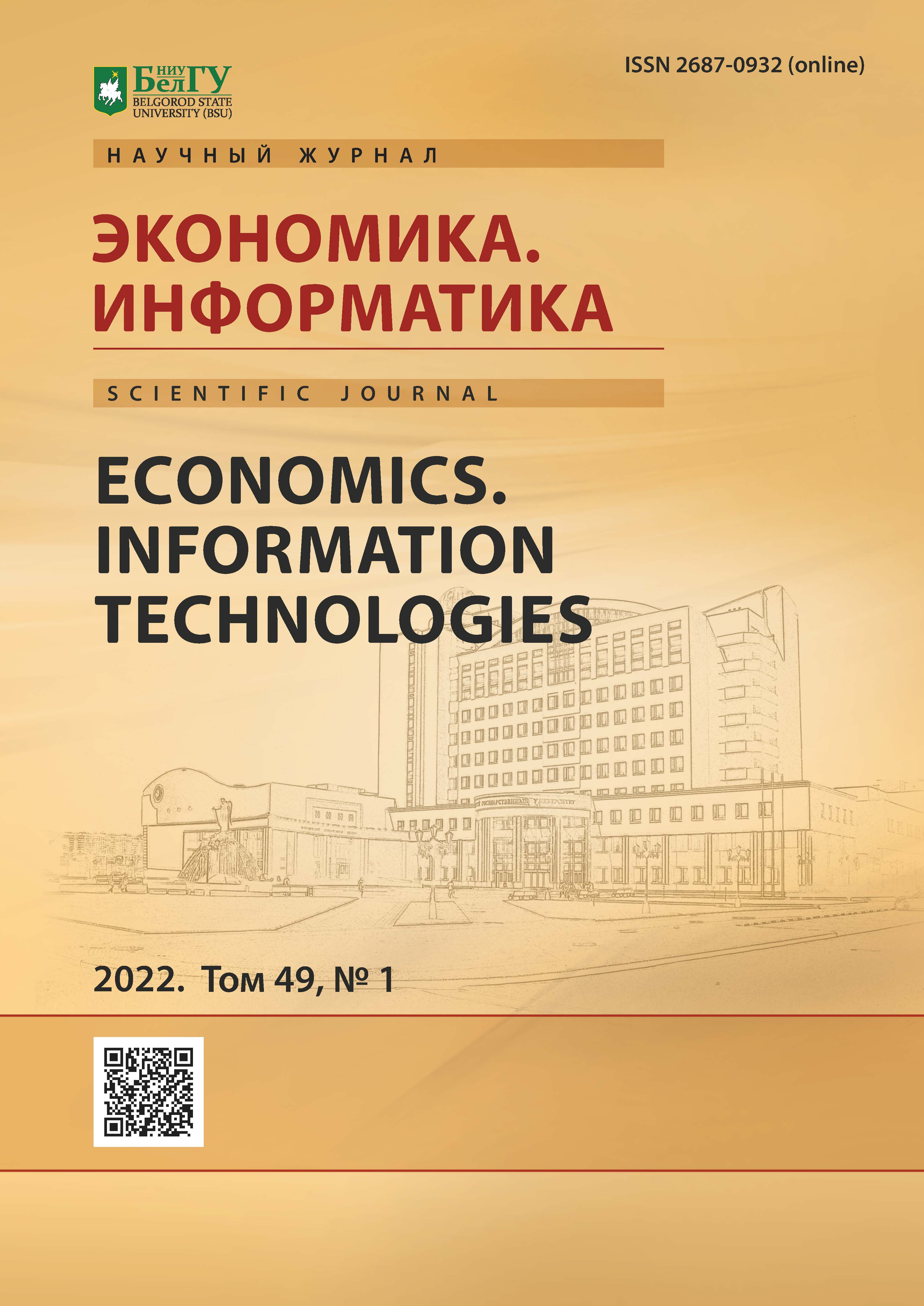Development of approaches to evaluating the marketing campaigns effectiveness for loyalty programs participants in retail (using the example of a pharmacy chain)
DOI:
https://doi.org/10.52575/2687-0932-2022-49-1-92-102Keywords:
marketing, control group, gross profit, bonus program, statistical criterionAbstract
Solving problems related to evaluating the effectiveness of marketing campaigns is a prerequisite for planning the marketing strategy of a retail organization and developing loyalty programs. The article presents an algorithm of a general approach to analyzing the effectiveness of stocks, including the principle of forming control and main groups with an assessment of the identity of the average values of the main target indicator in each group using statistical criteria. In the future, it is proposed to assess the reliability of differences between the average values of the target indicator in the control and main groups in the period before the promotion and in the promotional period. The subsequent analysis involves the construction of models and calculation of the profit from the stock for the actual and simulated targets. Using the example of a large pharmacy chain, an assessment of the effectiveness of two marketing campaigns aimed at participants of the existing bonus program is presented. The average daily revenue per participant of the bonus program was chosen as the main target indicator. When calculating the profit of the organization, the average trade premium of the pharmacy organization, the duration of the promotion, the size of the main group, as well as the cost of SMS, the size of the bonus for the participant of the promotion, the share of bonuses paid were taken into account. It was shown that the increase in the target indicator was not statistically reliable, while in order to achieve a positive economic effect, a revenue increase of 14% was needed for a four-week promotion, and 21% for a two-week one. The use of the proposed approach in the preliminary planning of marketing campaigns will allow us to assess the possibility of reaching the break-even point and make a decision on the feasibility of conducting, adjusting the duration and target audience of the campaign.
Downloads
References
Агеева Н.С., Воловская Н.М. 2019. Маркетинговые инструменты формирования потребительской лояльности. Экономика и бизнес: теория и практика, 5: 14–18.
Величко Н.Ю. 2016. Инструменты оценки эффективности программ лояльности. Вестник университета Российской академии образования, 3:100–105.
Ветрова Ю.А., Купчинская Ю.А. 2018. Финансовые показатели, как возможность прогнозирования эффективности маркетинговых акций. Бизнес-образование в экономике знаний, 1: 11–14.
Жаров В. ТОП-200 аптечных сетей России по выручке за 2020 год. 2021.Vademecum, 2: 36–45.
Кряжев Д., Гриценко П., Микова Е. 2021. ТОП-200 аптечных сетей России по выручке в первой половине 2021 года. Vademecum, 4: 24–32.
Минько А.А. 2008. Статистика в бизнесе. М., ЭКСМО, 504 с.
Мхитарян С.В., Данченок Л.А. 2018. Оценка результативности маркетинговых акций на основе тренд-сезонной модели продаж. Информационные технологии в экономике и управлении. Материалы III Всероссийской научно-практической конференции, Махачкала. Изд-во ДагГТУ: 3–6.
Ayvaz D., Aydoğan R., Akçura M.T., Şensoy M. 2021. Campaign participation prediction with deep learning. Electronic Commerce Research and Applications, 48: 101058. https://doi.org/10.1016/j.elerap.2021.101058.
Epstein L.D., Flores A.A., Goodstein R.C., Milberg S.J. 2016. A new approach to measuring retail promotion effectiveness: A case of store traffic. Journal of Business Research, 69: 4394–4402. https://doi.org/10.1016/j.jbusres.2016.03.062.
F.E. Grubbs. 1969. Procedures for Detecting Outlying Observations in Samples. Technometrics, 11: 1–21. https://doi.org/10.1080/00401706.1969.10490657.
Henzel J., Sikora M. 2020. Gradient boosting application in forecasting of performance indicators values for measuring the efficiency of promotions in FMCG retail. 15th Conference on Computer Science and Information Systems (FedCSIS). IEEE: 59–68.
Li X., Dahana W., Ye Q., Peng L., Zhou J. 2021. How does shopping duration evolve and influence buying behavior? The role of marketing and shopping environment. Journal of Retailing and Consumer Services, 62: 102697. https://doi.org/10.1016/j.jretconser.2021.102607.
Li Z., Yada K., Zennyo Y. 2021. Duration of price promotion and product profit: An in-depth study based on point-of-sale data. Journal of Retailing and Consumer Services, 58: 102277. https://doi.org/10.1016/j.jretconser.2020.102277.
Khouja M., Subramaniam C., Vasudev V. 2020. A comparative analysis of marketing promotions and implications for data analytics. International Journal of Research in Marketing, 37: 151–174. https://doi.org/10.1016/j.ijresmar.2019.07.002.
Ma L., Sun B. 2020. Machine learning and AI in marketing – Connecting computing power to human insights. International Journal of Research in Marketing, 37: 482–504. https://doi.org/10.1016/j.ijresmar.2020.04.005.
Moodley R., Chiclana F., Caraffini F., Carter, J. 2020. A product-centric data mining algorithm for targeted promotions. Journal of Retailing and Consumer Services, 54: 101940
Ryals L., Wilson H. 2005. Experimental methods in market research: from information to insight. International Journal of Market Research, 47: 347–366. https://doi.org/10.1177/147078530504700402.
Vakulenko Y., Shams P., Hellström D., Hjort K. 2019. Service innovation in e-commerce last mile delivery: Mapping the e-customer journey. Journal of Business Research, 101: 461–468. https://doi.org/10.1016/j.jbusres.2019.01.016.
Wang X., Wong Y., Teo C., Yuen K., Feng X. 2020. The four facets of self-collection service for e-commerce delivery: Conceptualisation and latent class analysis of user segments. Electronic Commerce Research and Applications, 39: 100896. https://doi.org/10.1016/j.elerap.2019.100896.
Zhang D.J., Dai H., Dong L., Qi F., Zhang N., Liu X., Liu Z., Yan J. 2018. How do price promotions affect customer behavior on retailing platforms? Evidence from a large randomized experiment on Alibaba. Production and Operations Management, 27: 2343–2345. https://doi.org/10.1111/poms.12964.
Abstract views: 531
Share
Published
How to Cite
Issue
Section
Copyright (c) 2022 ECONOMICS. INFORMATION TECHNOLOGIES

This work is licensed under a Creative Commons Attribution 4.0 International License.


